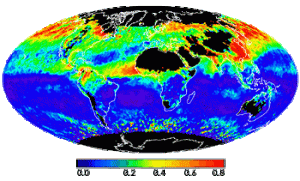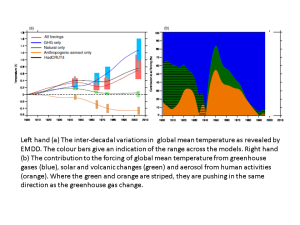 Today the news has been full of a study in the USA which reported that girls as young as 6 or 7 start to remove themselves from challenges associated with being “really really smart”. The research, by Lin Bian, Sarah-Jane Leslie and Andrew Cimpian of the Universities of Illinois, New York University and Princeton found that around the ages of 6-7, there started to emerge a difference in the way boys and girls viewed being “really really smart” in relation to their own gender.
Today the news has been full of a study in the USA which reported that girls as young as 6 or 7 start to remove themselves from challenges associated with being “really really smart”. The research, by Lin Bian, Sarah-Jane Leslie and Andrew Cimpian of the Universities of Illinois, New York University and Princeton found that around the ages of 6-7, there started to emerge a difference in the way boys and girls viewed being “really really smart” in relation to their own gender.
Wanting to explore the origin of the widespread “brilliance = male” stereotype that has been used to explain the lack of women in many occupations including science and engineering, and been demonstrated in reference writing, (more studies), they used younger participants than previous studies. Over 4 different studies they discovered that 5 year olds were equally likely to rate members of their own gender as being brilliant, but that by age 6-7, girls were statistically significantly less likely to rate members of their own gender as brilliant. A corresponding question about rating pictures of people as ” really really nice” started to reveal the opposite stereotype about women being nicer than men. The older children in the study also started to dissociate high school marks with “being clever” – they identified that girls got better marks in class than boys but did not associate this with girls being clever. (Actually the rest of us could probably learn something from this- some of the cleverest people I know would not “look” clever on paper as they may have finished formal education early and learnt in other ways – too often smart= good marks).
So these studies showed that children are influenced by gender stereotypes in relation to brilliance and niceness sufficiently such that they start to show these stereotypes around the ages of 6-7 (it should be noted that this study included mainly middle-class children of whom 75% were white, therefore it would be interesting to see how the conclusions differ across different cohorts). But it also showed some evidence that it influences choices made. Given a choice of two games, one presented as for those who work really hard, and one for those who are really really smart, both genders showed similar interest in the “try hard” game at all ages, but girls showed significantly less interest in the “really smart” game at ages 6 and 7.
In order to tell if these results actually have an influence on career paths, we would need to complete a longitudinal study of many many children and their influences. One such study is underway as part of the ASPIRES project run from Professor Louise Archer’s team at Kings College London. Whilst we wait for the second phase of that study to take us all the way from 10-18, we can perhaps start to piece together the new work with even younger children.
The ASPIRES work with 10-14 year olds suggests that children of this age and their parents strongly associate science with masculinity and science with cleverness. Whilst girls claim to enjoy science, they can’t see themselves in science careers. Those girls who are defined as “science keen” either by themselves or others often struggle to combine this interest with other stereotypical views of femininity or “girliness” – needing to engage in “identity work” to feel comfortable with their choices. “Science-keen” girls in the Archer et al (2012,2013) studies come in two flavours – those who also excel in other areas, e.g. sport, music etc and take pains to emphasise their “roundedness” and those who adopt the “blue-stocking” or nerdy approach. All the science-keen girls in this study were middle-class.
There are many many studies of how stereotype threat affects college-age students and beyond, brilliantly collected in “Whistling Vivaldi” which broadens the discussion from gender to other characteristics such as race and ethnicity – or indeed the i ntersectionality of gender and race. A highly recommended read for evidence based studies over a range of conditions and subject areas, you can hear Claude Steele talk about how he came to write the book, or watch a longer Claude Steele lecture.
ntersectionality of gender and race. A highly recommended read for evidence based studies over a range of conditions and subject areas, you can hear Claude Steele talk about how he came to write the book, or watch a longer Claude Steele lecture.
Given the compelling number of studies demonstrating the awareness of stereotypes at an ever younger age, and the studies of older students showing real effect on subject choice and career path, it would be easy as someone who cares passionately about all children having as many doors open to them as possible to get disheartened and think “it will ever be thus”. However, if stereotypes are starting to take hold and influence choices at 6 and 7 then it is probably also a good time to intervene. Talking to some primary school teachers and children in year 3 and 4 i.e. ages 8-9 it is clear that it is possible at this age to intervene appropriately and reset stereotypes at least in the School environment. My 9 year-old can explain that “it used to be thought women weren’t intelligent enough to make decisions like voting but now we know that’s not true at all”. It is clear to me that we need to begin our work with much younger age groups than we work with traditionally.
And finally, we should perhaps try to convey that “brilliance” has several definitions. Yes, it can be defined as ” exceptionally clever or talented” but it can also mean “of light, radiant, blazing, beaming” . Now that might be something to aspire to for all of us.
Additional resources
Books:
Whistling Vivaldi: How Stereotypes Affect Us and What We Can Do (Issues of Our Time) by Claude Steel (2011)
Pink Brain, Blue Brain: How Small Differences Grow Into Troublesome Gaps – And What We Can Do About It (2012) by Lise Eliot
Parenting Beyond Pink and Blue: How to Raise Your Kids Free of Gender Stereotypes, Christia Spears Brown (2014) Paperback
Ada Twist, Scientist and Rosie Revere, Engineer by Andrea Beatty and Dave Roberts
Videos and web links for resources:
How do we know it’s working? Book two tracking changes in pupils attitudes. A global citizenship toolkit by RISC, 2015 available from www.risc.org.uk/toolkit Fantastic classroom ideas covering diversity and equality alongside other global citizenship issues.
http://www.amightygirl.com/ Very good for links to books and facebook feed showcasing important women, many of them scientists and engineers.
http://www.ted.com/talks/colin_stokes_how_movies_teach_manhood?language=en
Research papers and similar:
Opening Doors, A guide to good practice in countering gender stereotyping in schools. Institute of Physics Report, October 2015
Gender stereotypes in Science Education Resources: A visual content analysis (2016) Kerkhoven, Russo, Land-Zandstra, Saxena and Rodenburg, PLOS ONE DOI:10.1371/journal.pone.0165037
‘Not girly, not sexy, not glamorous’ primary school girls’ and parents’ reconstructions of science aspirations (2013) Archer, DeWitt, Osborne, Dillon, Willis and Wong, Pedagogy, Culture and Society, 21:1, 171-194, DOI:10.1080/14681366.2012.748676 ASPIRES project
“Balancing Acts”: Elementary School Girls’ Negotiations of Femininity, Acheivement and Science (2012) Archer, DeWitt, Osborne, Dillon, Willis and Wong, Science Education, 96, 967-989




